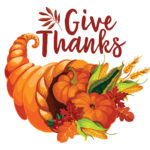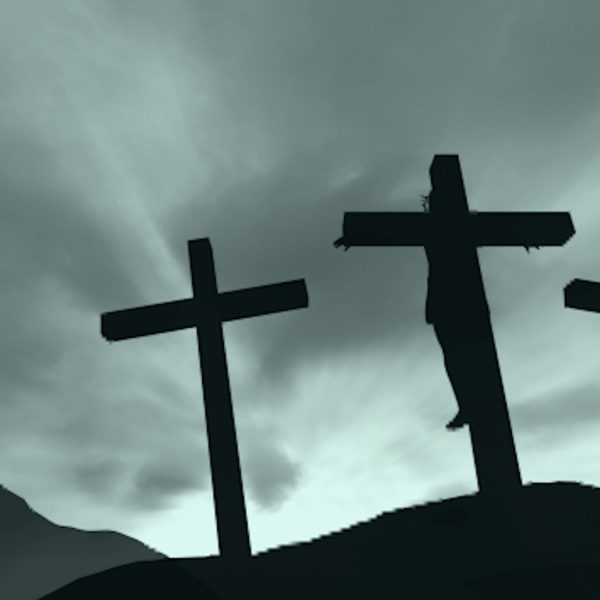For children, the weeks leading up to Christmas are often filled with joyful anticipation. Businesses, schools, and churches hang decorations that make children mindful of wonderful food, family, and gifts! Unfortunately, these worldly things often become their focus and the limit of their anticipation. For many families (and even congregations), there is a sad lack of emphasis on the coming Christ. Advent is one of the two anticipatory seasons of the Church Year; the other being Lent.
The four weeks of Advent, Latin for “coming” or “coming toward,” lead right up to the celebration of Christ. These weeks highlight the coming of Christ in three significant ways: His coming as prophesied in the Old Testament; His coming at Christmas and presence among us today; and His second coming at the end of time.
Consider the first week’s Old Testament reading from Series B, Isaiah 64:1–9. This passage highlights the wickedness of man and his vulnerability before God. On the same weekend, the alternate Gospel reading (Mark 13:24–37) warns of Christ’s second coming and need for repentance and forgiveness in Jesus. The Old Testament reading for the second weekend (Isaiah 40:1–11) offers comfort, prophesying John the Baptist. On this same weekend, the New Testament reading (Mark 1:1–8) presents John the Baptist’s coming in the New Testament as the herald of our Savior, Jesus Christ. In the Gospel reading for the fourth weekend of Advent (Luke 1:26–38), the angel announces to Mary the birth of Jesus.
Colors also play an important role in Advent. Some congregations use royal blue paraments for the altar while others employ purple. Both are appropriate and have their distinctive merits. Royal blue accentuates the celebratory element of Advent as we joyfully look forward to our King, Jesus Christ. This regal emphasis points Christians to Jesus’ majesty and His final victory over sin, death, and the power of the Devil. Purple has a more penitential air, putting us in mind of our sin, the need for salvation and Christ’s innocent misery on our behalf. Purple is not only present on the altar, but also in the candles of the Advent wreath. One candle is lit each week: two purple, one pink, and one final purple. Pink signifies joy and offers a respite from the more introspective purple.
There’s good reason to celebrate Advent and infuse its meaning into the worship life of the congregation in the weeks leading up to the more joyful and celebratory Christmas. Consider the three emphases explained above—Jesus: past, present and future. As Christians, we often place an unhealthy stress of the New Testament to the exclusion of the Old. Accentuating the prophesies of Christ in the Old Testament demonstrates the unity of the Bible. The prophets tell of Jesus’ coming in the Old Testament. Christ fulfills His ministry in the New. The Bible is one message. In addition, the manner in which Advent connects the Old and New Testaments is an ideal point for connecting with Jews who trust in the Messiah to come but do not trust in the Christ of the New Testament. The Christian observance of Advent and its attending worship is a great opportunity to connect with Jews and introduce them to Christ as the fulfillment of prophesies they hold dear.
As Christ has come, He is present among His people today. Celebrating and teaching Advent is important because it affords another opportunity to show Christ in the Word and Sacraments. We read of the Jesus to come in Isaiah, Zechariah, Malachi, and other prophets. This prophesied Savior came at Christmas to be present in the Bible along with Holy Baptism and the Lord’s Supper. Even when God referred to the Seed in Genesis 3, He intended that Seed, Jesus Christ, to create faith, grant forgiveness, and bring eternal life.
Finally, Advent points us to the future. In true Law and Gospel form, Advent humbles the proud and delights the meek. The readings for the season of Advent highlight the reality and seriousness of sin. Christ came because we needed forgiveness. The readings also speak of Christ’s certain return. He is coming again. Are we ready for His return? The unbeliever needs to know the reality of eternal hell. The Christian is reminded of the righteousness we have in Christ and the need to live daily in that gift.
Here are a few concrete suggestions for teaching Advent:
1. Children love to open presents. Break a cross down into four pieces. Wrap each piece in Christmas paper. Each week, open one piece and place it in a prominent location in the classroom. Stress that Christmas is about God’s greatest gift to us. Advent is waiting for that gift.
2. Wrap an empty box for Christmas. Each week of Advent, have the kids write down examples of sins for which we need forgiveness. Place these notes in the box. On the third week, explain to the kids that we give our sins to Jesus. Elucidate that our sins are not a blessing to make Jesus happy; rather, they are what He took to the cross for us. On the final week of Advent, place three notes in the box before class: “Love,” “Forgiveness,” and “Eternal life.” Open the box and draw out each note in succession, explaining that we receive these things in Jesus at Christmas.
3. Use the classroom walls to create a simple history of Christ in the Bible. At one end, create a display of the prophets of the Old Testament. Kids might draw pictures of the prophets. Have them write the prophesies on the display. Farther down the wall, create a display highlighting the ministry of John the Baptist. Farther again, create another display that teaches Christ’s work to forgive our sins. Finally, include a display that teaches Christ’s second coming. The idea is that the wall display will demonstrate the continuity of the Advent in the Bible.
4. Hang a large section of newsprint, approximately six feet in height, on the wall. Draw an empty cross on the paper. Each week of Advent, have the kids choose one verse from the lectionary reading for that Sunday. Write that verse on the outer rim of the cross. Each subsequent week, add another verse. The goal is to see how the verses of the lectionary teach of Christ’s coming–and His coming is exemplified in the cross. (As an alternative to using newsprint, attach individual sheets of paper to the wall in the shape of a six-foot cross.)
Have fun! God’s richest blessings as you teach this rich and joyful season!
Find additional ideas for Advent here.
















One comment
Kara Mantey
I maybe over 60, I still like to go to sunday school even if it’s in my living room.